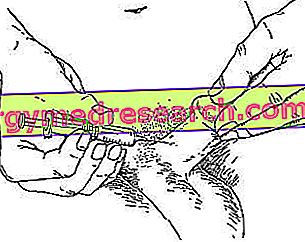Related articles: Cleft palate
Definition
Cleft palate is a congenital malformation (present since birth), characterized by the presence of a fissure in the palate. This defect is the consequence of an incorrect welding of the embryonic sketches destined to form the palate, which normally closes around the end of the first trimester of gestation.
The possible causes of cleft palate are many. Often, genetic and environmental factors are involved, such as the alteration of specific genes, exposure to ionizing radiation, the intake of particular drugs, the non-optimal intake of folic acid, smoking habits and the abuse of alcohol in the first weeks of pregnancy.
Most common symptoms and signs *
- Language difficulties
- Dysphagia
- Hearing loss
- Dental malocclusion
- micrognathia
- Acid regurgitation
- Growth delay
- Nasal voice
- He retched
Further indications
The cleft palate is usually presented as a more or less extended opening of the anterior part of the hard palate. In the most serious cases, the fissure can also reach the palatine vault, the soft palate and the uvula. The cleft palate can be accompanied by cleft lip; in this case, we talk about cleft lip or palate-cleft palate.
The fissure in the palate involves full contact between the mouth and the nasal cavities. This interferes with feeding (in particular, the normal suction mechanism is prevented), the use of language, hearing and the development of teeth. Cleft palate increases the risk of middle ear infections, as mucus or saliva can invade the ear canal. Moreover, this malformation can facilitate the deviation of food into the respiratory tract, exposing the child to a high risk of bronchopulmonary infections (eg pneumonia ab ingestis).
The treatment involves different approaches, including the use of prosthetic devices and plastic surgery. In general, surgical repair of cleft palate is performed in more time. The goals of treatment are to ensure normal nutrition, speech and maxillofacial development.



